Liugong Island (刘公岛) is located at the entrance of Weihai Bay, covering an area of 3.15 square kilometers. The island has a nearly triangular shape with a coastline stretching 14.95 kilometers and its highest point, Qiding Mountain, reaching an elevation of 153.5 meters. Known as the “Eastern Shield” and the “Unsinkable Battleship,” Liugong Island has held significant military importance as a natural maritime barrier for Weihai City. It has witnessed numerous naval battles from the Ming and Qing dynasties through to the pre-liberation period, with the First Sino-Japanese War leaving a particularly profound historical legacy.
The island features a rugged northern coastline with steep sea cliffs and a gently sloping southern side. It boasts an 87% forest coverage, earning it the nicknames “Fairy Mountain on the Sea” and “Paradise on Earth.” Rich in cultural and historical sites, Liugong Island houses relics from the Warring States period to more recent structures from the Qing dynasty, including the Beiyang Navy Headquarters, Naval Academy, Dingyuan Warship, and ancient fortresses from the First Sino-Japanese War. The island also contains many European-style buildings from the British lease period. Since opening to the public in 1985, after being a restricted military zone, Liugong Island has become a renowned scenic and historic site.
Table of Contents
- Basic Information
- Location and Transportation
- Map of Liugong Island
- Highlights of Liugong Island
- Beiyang Navy Admiral’s Office
- Ding Ruchang’s Residence
- Beiyang Naval Defense Forts
- Beiyang Navy Iron Pier
- Jiawu War Memorial Hall
- China Jiawu War Museum
- Liugong Temple
- Liugong Island National Forest Park
- Christ Church, Liugong Island
- China Golf Museum
- Rare Animal Zoo of Liugong Island
- Dragon King Temple (Dinggong Shrine)
- Vlog about Liugong Island
- Other Attractions in Weihai Urban Area
Basic Information
| Estimated Length of Tour | 1 day |
| Ticket Price | 122 RMB including the admission and the round ferry trip |
| Opening Hours | 7.30 – 17.30; Last admission: 15.00 |
| Telephone Number | 0086-0631-5205128 0086-0631-5287807 |
Location and Transportation
Liugong Island is situated at the eastern tip of the Shandong Peninsula in eastern China, at the mouth of Weihai Bay, Weihai City. It is approximately 2.1 nautical miles from the downtown area of Weihai. The island is renowned for its natural beauty, historical landmarks, and diverse attractions.
To get there, you can take Bus No. 10, 32, or 39 to Weihai No. 2 High School North Campus Station (威海二中北校区站). From there, it’s a short walk to Liugong Island Passenger Center. Alternatively, take Bus No. 12, 37, or K2 to Zhudao Office Station (竹岛办事处站). From there, it’s also a short walk to Liugong Island Passenger Center.
Map of Liugong Island
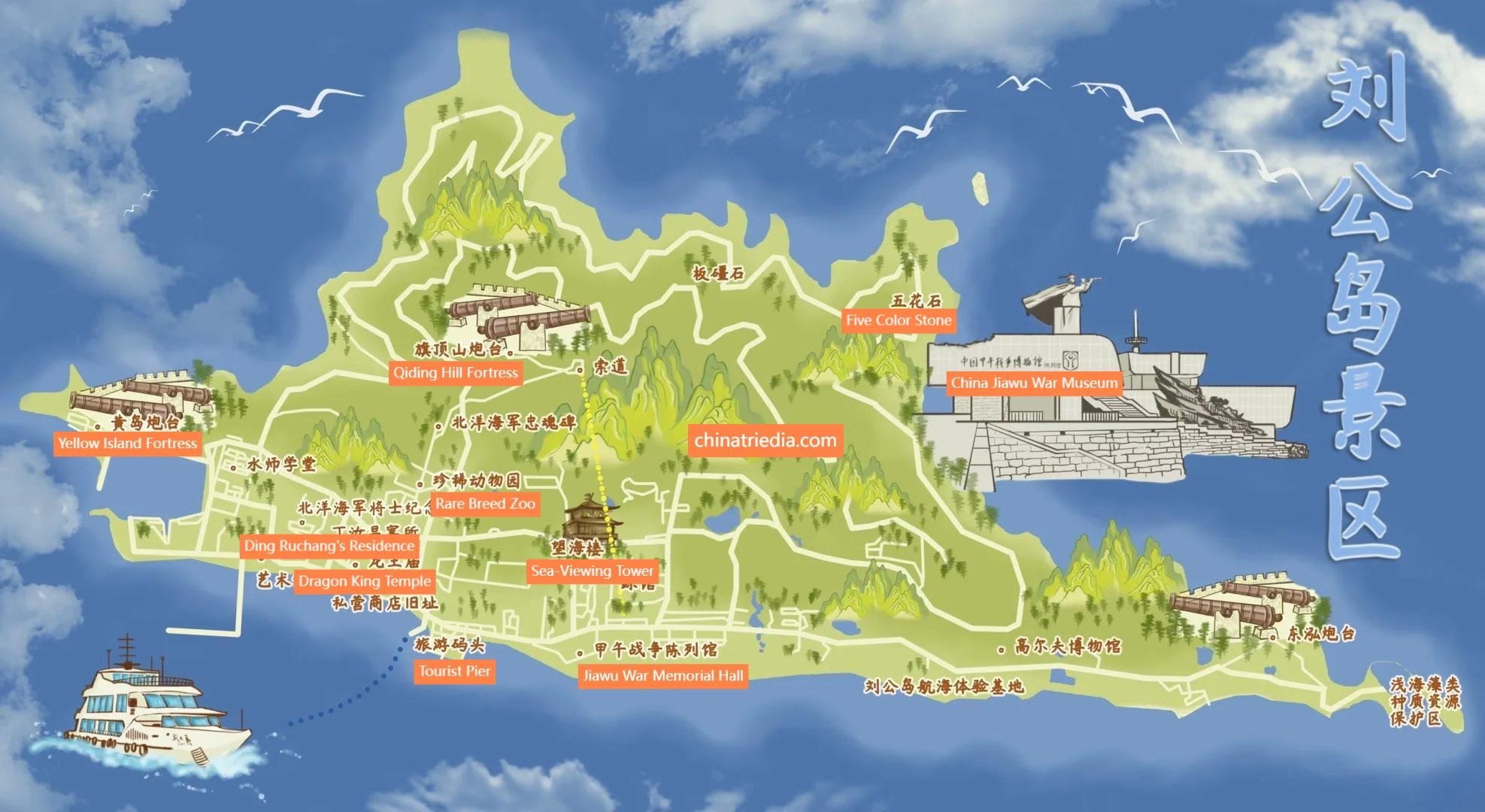
Highlights of Liugong Island
Beiyang Navy Admiral’s Office
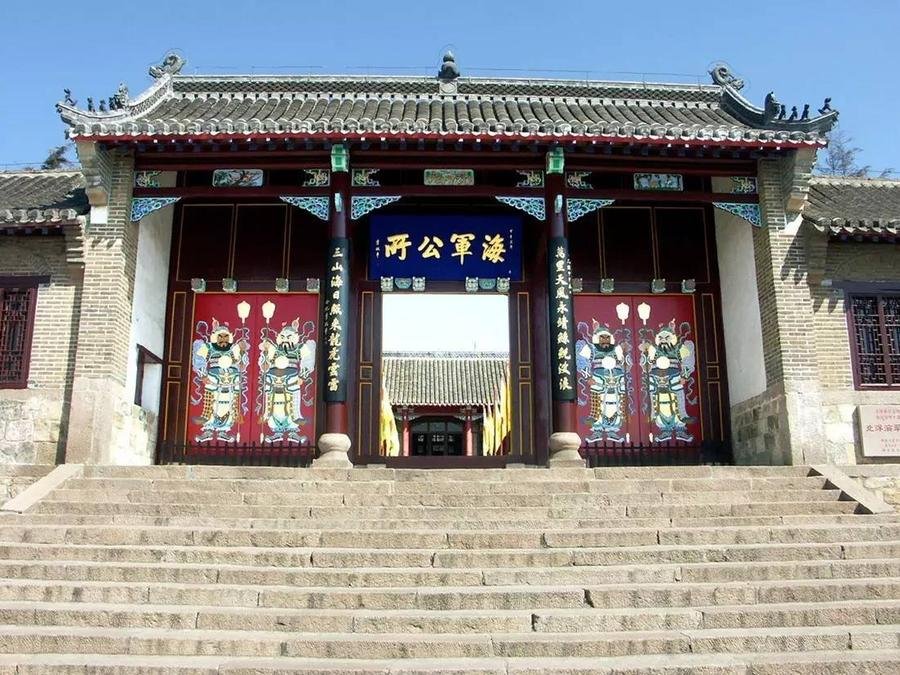
The Beiyang Navy Admiral’s Office, also known as the Water Master Admiral’s Yamen, is situated in the western central part of Liugong Island. Facing south and backed by hills and the sea, the building is a single-story structure typical of Qing Dynasty architecture, constructed with brick and wood. The complex covers approximately 4,000 square meters and includes a series of halls arranged along a central axis, surrounded by a perimeter wall.
At the center of the compound is the main gate, inscribed with “海军公所,” written by Li Hongzhang. Flanking the gate are corner towers and side gates, used for ceremonies and musical performances. To the southwest, there is a two-story lookout tower. Inside the compound, the main halls are arranged from south to north as the Ceremonial Hall, Admiral’s Hall, and Sacrificial Hall. Auxiliary and side rooms, totaling 68, served various functions such as offices for officers, foreign instructors, and other naval personnel.

In the second courtyard, there is an underground water storage tank with a capacity of about 300 cubic meters, featuring two access points covered with iron lids. During the Japanese and British occupations, the building suffered damage and modifications, including the addition of a sailors’ club by the British on the eastern side of the first courtyard.
After the establishment of the People’s Republic of China, the building was used by the Chinese People’s Liberation Army Navy. It underwent major repairs from 1978 to 1984 and was handed over to local cultural heritage authorities in April 1985. The main hall now houses exhibits on the Sino-Japanese War of 1894-1895, including displays on naval equipment, Beiyang Navy history, portraits of naval officers, ship models, the Battle of Weihai, and artifacts related to the war. By the end of 2002, the site featured 11 exhibition halls, including a memorial to Admiral Ding Ruchang.
Ding Ruchang’s Residence

Ding Ruchang’s Residence, now the “Ding Ruchang Memorial Hall,” was built in 1889 and is located about 200 meters east of the Beiyang Navy Admiral’s Office. This brick and wood structure faces south and covers 7,000 square meters. The layout resembles Ding Ruchang’s ancestral home in Wang Langzhong Village, Chaoxian, Anhui Province, consisting of three courtyard sections: left, middle, and right. The western courtyard served as private quarters, the eastern courtyard housed attendants, and the central courtyard was used for Ding’s office, residence, and reception area.
A notable feature of the residence is a century-old wisteria vine, planted by Ding Ruchang himself. Although the original trunk has withered, new branches continue to thrive, blooming profusely each May with fragrant flowers. After the formation of the Beiyang Navy in 1888, Ding Ruchang lived here with his family for over six years, earning the nickname “Little Ding Gong Mansion.”
Beiyang Naval Defense Forts

Liugong Island is home to six Qing Dynasty-era naval defense forts from the Beiyang Fleet period. These forts are named Huangdao Fort, Majingzi (also known as “Behind the Office”) Fort, Qiding Mountain Fort, Yingmendong Fort, Nanzui Fort, and Donghong Fort. Strategically positioned, they correspond with forts on the northern and southern shores of Weihai Bay, controlling the two sea entrances to the bay. Designed by German engineer Hanaghen, these forts are interconnected through a network of underground tunnels, soldier barracks, and ammunition depots.
Constructed using granite and reinforced with cement, the forts are known for their solid construction and meticulous craftsmanship. The design was practical and robust, ensuring the forts could withstand heavy use and provide effective defense.
Beiyang Navy Iron Pier
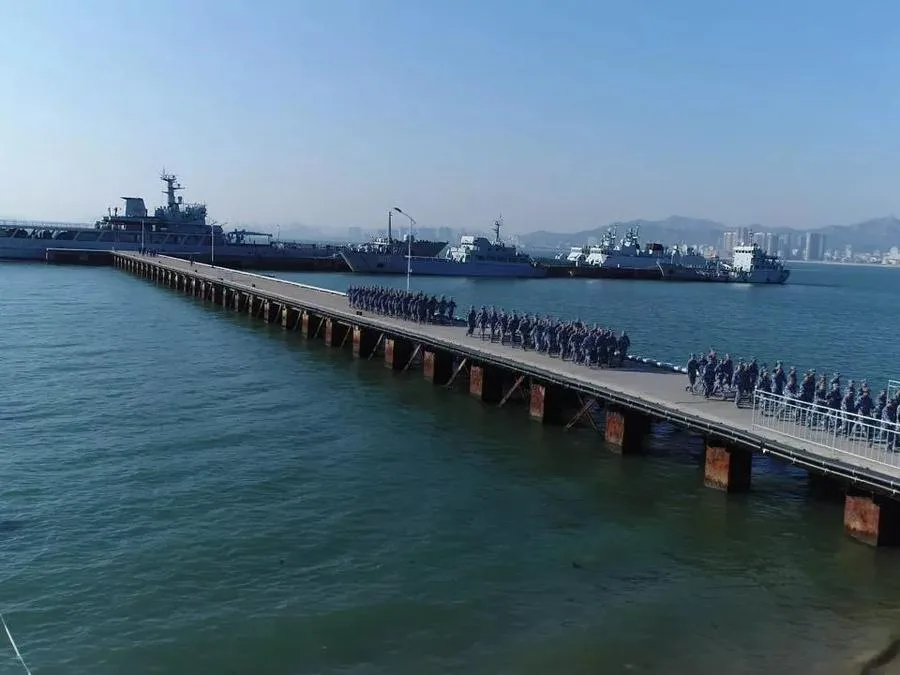
The Beiyang Navy Iron Pier, located in the southwestern part of Liugong Island, was built in 1889 during the 15th year of the Guangxu Emperor’s reign. It served as a docking point for the Beiyang Fleet’s warships. The pier’s supporting columns were made of thick iron plates nailed into square columns, each with a diameter of four to five feet and a length of five to six yards. These columns were filled with cement to create a rock-like solidity and driven deep into the seabed.
In 1915, the pier was reconstructed with an iron frame on top, extending 205 meters in length and 6.9 meters in width, with a water depth of 7 meters. By 1935, the iron plates had corroded, prompting the Weihaiwei Management Office, in collaboration with the Chinese Navy, local gentry, and the British Navy, to form a committee to repair the pier. The rebuilt pier could accommodate ten-thousand-ton ships at high tide. In 1953, the Weihai Municipal Government undertook further repairs, replacing the rusted iron plates, columns, and frames with high-quality steel. In 1971, a solid “T”-shaped extension bridge was added to the original structure. Today, the pier remains in use by the People’s Navy.
Jiawu War Memorial Hall

The Jiawu War Memorial Hall, located approximately 300 meters east of the Liugong Island tourist dock, is a comprehensive memorial dedicated to the tragic history of the First Sino-Japanese War (1894-1895). The memorial hall stands 18 meters tall and features a unique design, resembling several warships colliding and floating on the sea. An imposing 15-meter statue of a Beiyang Fleet officer integrates seamlessly with the structure. Covering an area of 1.42 hectares and with a building area of 8,900 square meters, the memorial was constructed in 1993 through a collaboration between the Liugong Island Management Committee and Guangdong Heyuan Huaguan Co., Ltd., with a total investment exceeding 60 million yuan. It opened to the public in June 1995.
Inside, the memorial hall houses nine exhibition halls: the Foyer, the Formation of the Beiyang Fleet, the Summer Palace Naval Academy, the Battle of Pungdo, the Battle of Pyongyang, the Battle of the Yellow Sea, the Fall of the Lushun Base, the Bloody Battle of Weihai, and the Epilogue Hall. Utilizing a mix of sculpture, painting, and advanced sound and light technologies, the exhibits vividly recreate the history of the Beiyang Fleet from its establishment to its ultimate demise.
China Jiawu War Museum

The China Jiawu War Museum, designed by Professor Peng Yigang, an academician of the Chinese Academy of Sciences, was completed and opened in 2008. With a building area of 7,622 square meters, the museum’s core exhibit is “National Tragedy: 1894-1895 – The True History of the Jiawu War.” This exhibit is divided into four sections: “China and Japan Before the War,” “Japan Opens the War Pandora’s Box,” “National Humiliation and Resistance,” and “A Long-Lasting Alarm Bell.”
The museum’s exhibition space spans over 4,500 square meters and showcases more than 500 historical photographs, over 300 precious cultural relics, and more than 100 sets of auxiliary exhibits. It also features a wealth of oil paintings, sculptures, and other art pieces. This comprehensive exhibition offers a detailed and immersive portrayal of the Sino-Japanese War, providing valuable insights into this significant historical event.
Liugong Temple
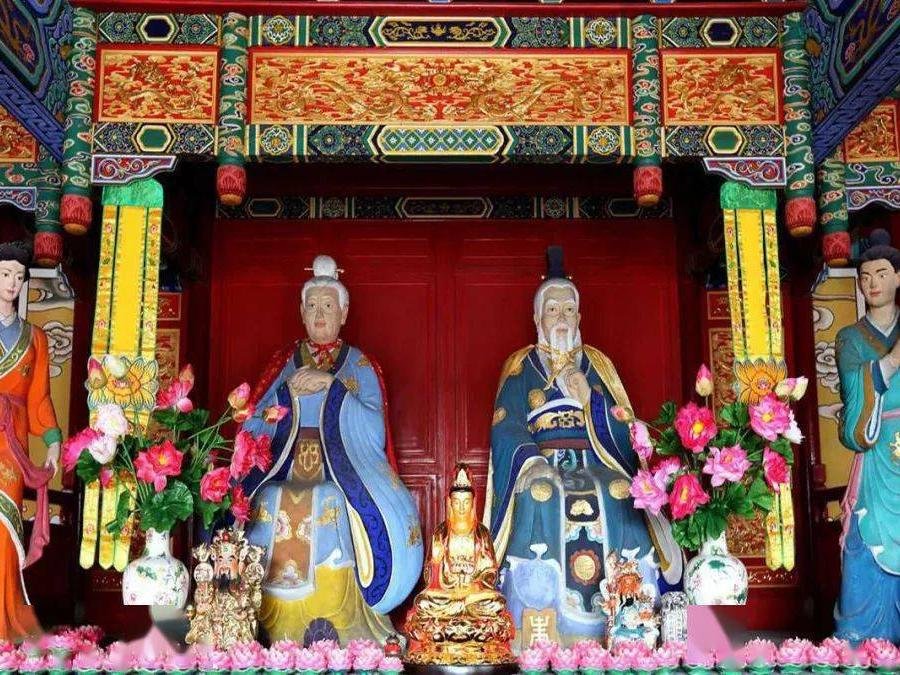
Liugong Temple, situated approximately 300 meters east of the tourist dock on Liugong Island, lies on the north side of Dinggong Road. Legend has it that during the Han Dynasty, Liu Gong and his wife rescued many shipwrecked sailors at sea. Grateful fishermen constructed a temple on the sunny slope in the middle of the island, where statues of Liu Gong and his wife were enshrined, thus giving rise to Liugong Temple. Over the years, passing ships often stopped here, and sailors disembarked to pray for safety. In 1889, Li Hongzhang, a statesman of the Beiyang government, and Zhang Wenxuan, the commander of Liugong Island’s garrison, donated funds to renovate Liugong Temple. However, in 1898, during the British lease of Weihaiwei and Liugong Island, the statues of Liu Gong and his wife were relocated to Beigou Village outside the island.
In 1994, as part of tourism development efforts, the Liugong Island Management Committee invested over 4 million yuan to rebuild Liugong Temple on an area covering 6,000 square meters. The architecture follows a traditional Chinese courtyard layout resembling Qing Dynasty style, featuring a main hall, side halls, a bell and drum tower, and an archway.
Liugong Island National Forest Park
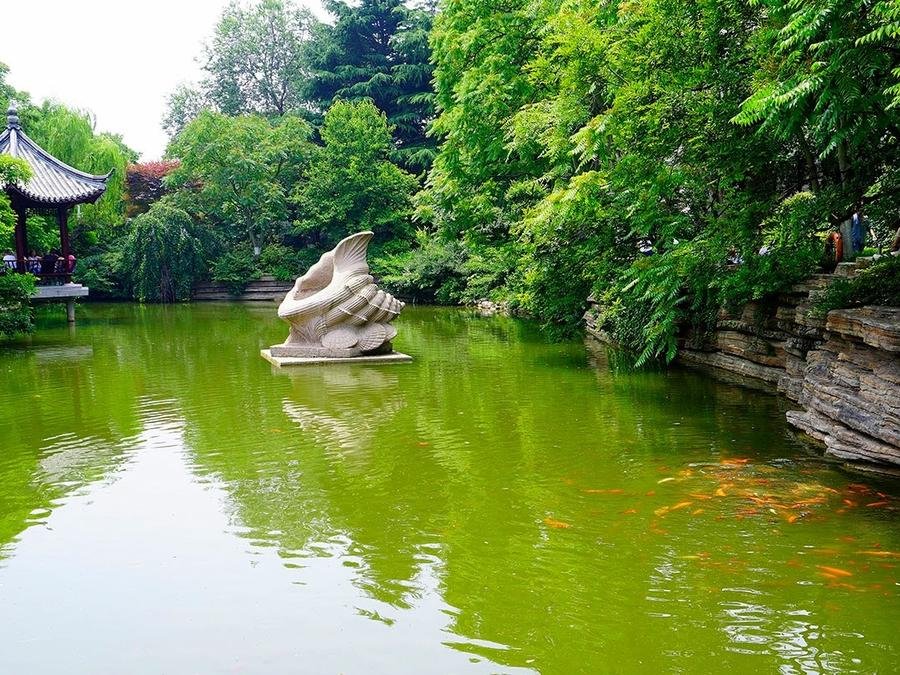
Established in 1992 and approved by the National Forestry Department, Liugong Island National Forest Park covers an area of 269 hectares, accounting for 74% of Liugong Island’s total area. The forested area spans 222.67 hectares, boasting an impressive forest coverage rate of 85%. The park is dominated by over 60 species of plants, primarily featuring Korean pine, with lush vegetation and diverse wildlife including spotted deer.
Within the park, visitors can explore numerous attractions such as six Qing Dynasty forts, the Beiyang Navy Martyrs Monument, Liugong Spring, a zoo, the Sea-view Pavilion, Wuhua Stone, a spotted deer enclosure, a fishing platform, and the Listening to Waves Pavilion. These sites provide not only scenic beauty but also historical and cultural insights into the island’s past.
Christ Church, Liugong Island
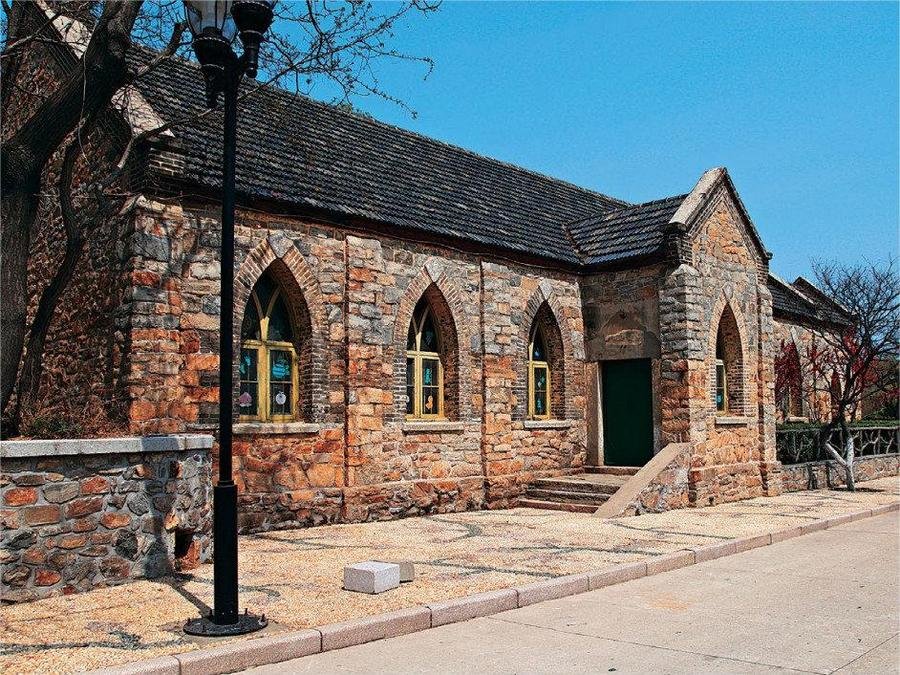
Christ Church on Liugong Island is located along Denggong Road and was constructed in the early 20th century by the Christian Missionary Alliance. Together with its ancillary buildings, it covers an area of over 200 square meters. Originally used primarily by foreigners and the British military stationed on the island, the church is built in a European style with stone masonry. It exhibits slight Gothic architectural influences, particularly noticeable in the shape of its windows. Compared to other British lease buildings, Christ Church stands out for its distinctiveness and representative architectural style.
China Golf Museum

The China Golf Museum, inaugurated in May 2012, is divided into indoor exhibition halls and outdoor archaeological sites. The indoor exhibition hall covers an area of 1,960 square meters and showcases a comprehensive collection of antique golf clubs, equipment, golf literature, stamps, postcards, and historical documents related to the origin and development of golf globally. The museum vividly presents the evolution of golf through different periods.
The outdoor archaeological site features the restored Liugong Island Golf Course from the British lease period, adhering to the original links style. The course includes nine international standard holes with a total length of 3,029 meters. This part of the museum faithfully preserves the atmosphere and layout of the historical golf course.
Rare Animal Zoo of Liugong Island

The Rare Animal Zoo of Liugong Island is situated in the western part of Liugong Island National Forest Park, where it enjoys shelter from the wind and ample sunlight amidst lush vegetation. Spanning an area of 30,000 square meters, this zoo is a prominent attraction featuring several specialized habitats:
- Giant Panda Pavilion: Completed on September 30, 2010, and opened to the public on November 5 of the same year, the Giant Panda Pavilion houses a pair of national treasures named “Zhuling” and “Ningning.” These giant pandas relocated from the Bifengxia Base of the China Conservation and Research Center for the Giant Panda in Ya’an, Sichuan Province. The pavilion showcases a strong Qiang ethnic style and includes both indoor and outdoor activity spaces. It also features essential facilities such as a panda hospital, panda kitchen, and soundproof room to ensure the well-being of these beloved pandas.
- Formosan Sika Deer and Long-haired Mountain Goat Pavilion: Opened on May 28, 2011, this pavilion is equipped with underfloor heating systems and boasts amenities like rockeries, ponds, an animal hospital, and monitoring rooms. It provides a nurturing environment for Formosan sika deer and long-haired mountain goats, supporting their healthy growth on Liugong Island.
- Elk Pavilion: Established on August 2, 2011, the Elk Pavilion houses three national treasure-level rare animals—elks—from the Jiangsu Dafeng National Elk Nature Reserve, China’s largest elk breeding area. This marks the first introduction of elks to Liugong Island, enhancing the diversity of rare species on the island.
Dragon King Temple (Dinggong Shrine)

The Dragon King Temple, also known as Dinggong Shrine, is located 100 meters west of the Beiyang Fleet Admiral’s Office. Originally constructed towards the end of the Ming Dynasty and later refurbished during the late Qing Dynasty for coastal defense purposes, Liugong Island became a crucial base for the Beiyang Fleet and Beiyang Garrison. The temple is built in a brick-and-wood structure with a courtyard layout typical of a traditional Chinese temple. It consists of the front hall (inverted hall), east and west side rooms, and the main hall, totaling 14 rooms across two courtyards and covering an area of 1,700 square meters including the temple’s front stage.
Inside the main hall, the central altar is dedicated to the Dragon King of the Eastern Sea, flanked by night demons and turtles. The east and west walls are adorned with murals depicting stories from “Romance of the Three Kingdoms” and “Investiture of the Gods.” After the First Sino-Japanese War, the shrine was rededicated to Ding Ruochang, hence its renaming to Dinggong Shrine. Within the shrine, two stone tablets commemorate significant figures: one honoring Admiral Ding Ruochang with the inscription “柔远安迩 (Gentle from afar, secure nearby),” and the other honoring General Zhang Wenxuan, the commander of the garrison stationed on the island, with the words “治军爱民 (Govern the military with love for the people).” Both tablets were erected by the local merchants and gentry of Liugong Island in the 16th year of the Guangxu Emperor’s reign (1890).

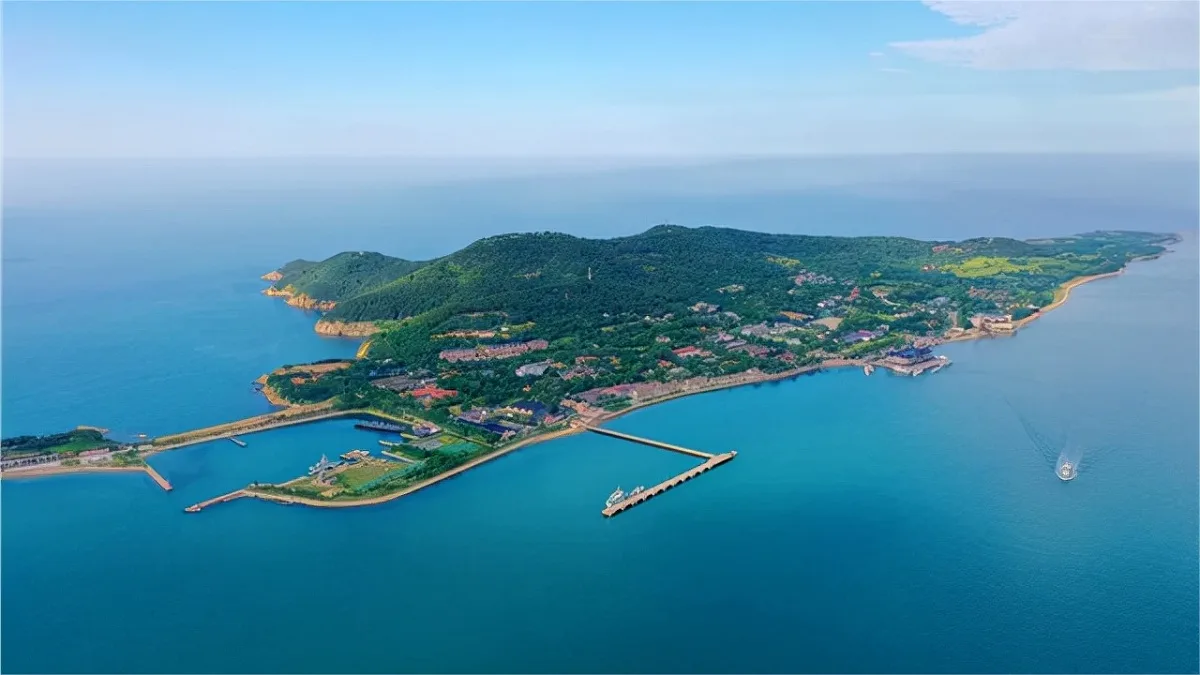


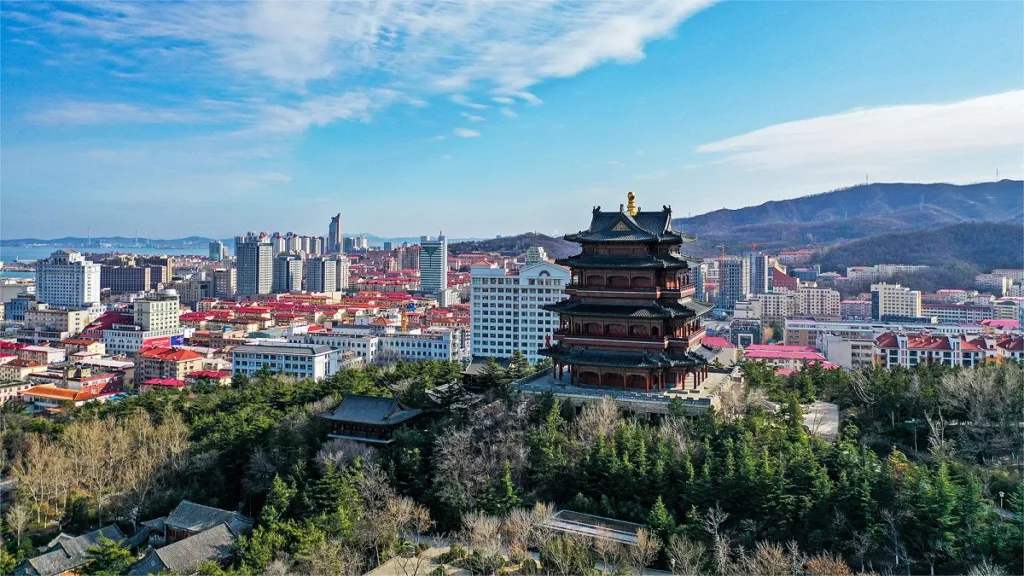

We boarded the boat headed to Liugong Island before 8 AM, and it wasn’t too crowded. Taking Line 1 was comfortable, and there weren’t many people at the various attractions. Together with the beautiful scenery of Liugong Island, it made for a very pleasant experience.
On Liugong Island, you can take a sightseeing bus around the island. You can get off at each spot to explore and then catch the bus again at the designated stops. Although it’s a small island, walking around can be quite tiring!
The last boat leaving the island during the off-peak season is at 5 PM. We walked to Donghong Fort but missed the last boat back to the mainland because the sea breeze was too strong that day. We contacted several boat rental agencies, but none could take us off the island. Luckily, there are accommodation options like Liugong Island Hotel and a few guesthouses where we could stay overnight. The Liugong Island Hotel offers a business-standard room for 170 RMB… Read more »
The seagulls flying back and forth with the cruise ship are keenly watching every human hand. They are happily feasting, and we are enjoying the sight too.
During the off-peak season, there are fewer people, and the passenger ferries may not depart on time. Sometimes, they wait until they are fully loaded before sailing, especially for the return trips, so it’s advisable to plan your time accordingly. If you’re planning to take the sightseeing bus, it’s best to arrive on the island before 11 AM, as the sightseeing bus service ends at 2 PM during the off-peak season. In the peak season, it’s recommended to take the… Read more »
I came to Liugong Island in Weihai, and it has been snowing these past few days. The scenery is beautiful.
Early morning ferry to the island: 8 AM, you can sit wherever you like, on either the upper or lower deck.
First ferry returning from the island: 11 AM, it takes about 15 minutes to reach the dock. On the return trip, the upper deck charges 10 RMB.
Many attractions close around 15:20, and the weather was not good on the day we visited. The last boat leaves at 4 PM. If you want to explore various places, it’s best to arrive early.
I arrived at the Liu Gong Island Pier around 8:30 AM. There were a lot of people queuing to board the boat, but thankfully, the line kept moving, so we didn’t wait too long. However, it was very hot, and the ticket price of 122 Yuan was not cheap. After visiting the Jiawu War Museum and the nearby warship, I was too exhausted to continue. With the ongoing light rain, the crowds, and the heat, we didn’t explore for long… Read more »